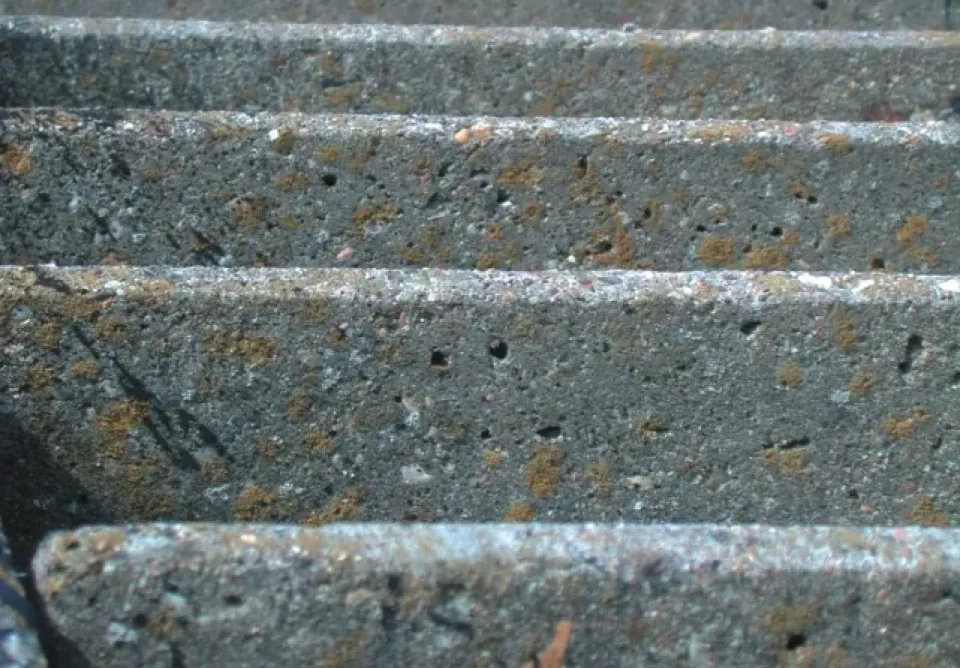
Save your concrete floors
Each of us at least once in our lives has been in a room with dusty concrete floors. Steps on such a floor personally remind me very much of the steps of American astronauts on the surface of the Moon. After all, after each step, a gray cloud of "lunar" dust rises around your shoes, which, without settling, hangs in the air for a long time. It seems that the Earth's gravity has somehow strangely decreased, you only have to push off with your foot - and you can make a huge, incredible jump... Unfortunately, this illusion immediately disappears when you notice a thick layer of gray cement (and not at all "lunar") dust on your black shoes, which were polished to a shine in the morning. In addition, the consequence of such a floor in warehouses (or trading floors) is dust on the shelves, and most importantly - on the goods, which worsens their attractiveness and presentation. And I won't even touch on the harmful effects of cement dust on human health...
So, the problem of weak, dusty concrete floors is not new. It arose immediately after the invention of cement. At different times, this problem was solved in different ways. Now there are also many ways to remove dust and strengthen a weak concrete floor. But before choosing a repair method, it is necessary to consider the reasons for the decrease in the strength of concrete, and as a result - its dusting and destruction.
The reason for the low strength of concrete is the presence of voids in its volume - pores. Unfortunately, a concrete structure cannot be made without pores. Where do they come from? Everything is explained simply. During the manufacture of concrete, it must contain a lot of moisture, which is necessary for the hydration of cement (hydration is a chemical reaction of cement with water, during which it hardens). The remains of this excess water remain inside the cement, occupying a certain volume there. Then the concrete dries, the water evaporates, and in its place there are voids - pores.
So, the reason has been established! Now it is necessary to choose a method for eliminating this defect. A simple method of repair suggests itself - to fill the pores with something! But here the next question arises - with what? What can penetrate inside a monolithic mineral structure? The answer is simple - only liquid. And again the question - what liquid? Two types of "liquids" can be offered. The first type is a primer (general construction impregnating primer). The second type of "liquid" is a special agent for impregnating concrete. A new question arises, which "liquid" is better? To do this, it is necessary to understand what they consist of, how they work and what is the result of processing with both types of "liquids".
Let's start with the primer. Primer (it is usually water-soluble based on acrylic) is, simply put, a glue (adhesive substance) highly diluted with water. During priming, particles of this glue penetrate the concrete together with water and fill its voids-pores. Then the water evaporates, and the glue, remaining in the pores, hardens and glues (physically connects) the concrete particles. The concrete becomes stronger and stops dusting. Great, you say, the problem is solved! However, not everything is as simple as we would like. Unfortunately, the physical and chemical characteristics of the primer hardened inside the concrete (weight, density, strength, durability, chemical resistance, etc.) are much inferior to the characteristics of the concrete itself. As a result, primed concrete is not a homogeneous material - a monolith. Now let's consider special means for impregnating concrete. They, like primers, are also liquids. And they also penetrate the material due to the fact that they are aqueous solutions. But this is where the similarity of both types of "liquids" ends.
Let's consider one of the special means for impregnating concrete - "Grover ASK 617". "Grover ASK 617" is an aqueous solution of active silicates, catalysts and surface-active substances (surfactants). Due to the surfactants, the solution penetrates well into the pores and microcracks of concrete. And here, inside the concrete, a chemical reaction of the interaction of the active silicates of the solution with calcium cement occurs. As a result of this reaction, free lime and calcium carbonate of concrete are converted into a dense crystalline structure. This dense crystalline structure fills the pores and microcracks. It is similar to the structure of natural minerals and has physical and chemical characteristics very close to the characteristics of the concrete itself. In addition, this crystalline structure chemically (and not physically, as in the case of a primer) binds (one might say "grows") with the walls of pores and microcracks. As a result, we obtain an almost homogeneous material - a monolith.
After treating concrete with this agent, its strength increases by up to 50%, and its water permeability decreases several times. Concrete acquires excellent resistance to petroleum products, fats and most organic acids. «Grover ASK 617» is used during external and internal works for the treatment of concrete floors, walls and other surfaces (basements and blind areas, warehouses, workshops, bottling plants, car repair shops, parking lots and garages, water treatment plant pools, sewer wells, etc.). In addition, the product is recommended for use on plastered walls (including lime plaster), as well as for asbestos-cement slabs. Applying the product «Grover ASK 617» similar to applying a regular primer: it can be applied with a garden sprayer, brush or roller. Application is carried out in thin, even layers, each subsequent layer is applied after the previous one has been absorbed. I hope that after reading this article you will already know how to repair weak, dusty concrete floors. And when choosing materials, your choice will not fall on universal ones, but on specially designed products.







